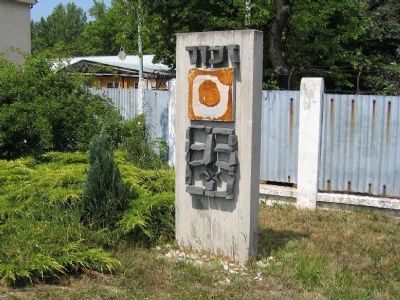Sered
About sixty kilometres east of Bratislava lies a small town called Sered and there lay between 1941 and 1945 a transit camp for Slovak Jews awaiting deportation to Nazi extermination- or concentrations camps. In 1941 and 1942, about 4500 Jews were deported in five transports to Poland. In the winter of 1944, a total of about 13 500 were deported to Auschwitz, Sachsenhausen and Theresienstadt. The camp was guarded by the notorious and paramilitary Hlinkaguard, who rounding up Slovakian Jews and put them in Sered. The camp was liberated by the Soviet Red Army April 1, 1945.
Current status: Preserved with monument (2008).
Address: Kasarenska, 92601 Sered.
Get there: Car.
Follow up in books: Gilbert, Martin: The Holocaust: A History of the Jews of Europe During the Second World War (1987).



In 2016 a modern museum opened in former camp barracks. But when I visited the site in 2008 the former camp site was a military area and not accessible to visitors. One reason why there wasn’t any museum at that time might have been that one didn’t know how such a museum should look like, given the role of Slovakia during the war.
After the war, Slovakia’s alliance with Germany was silenced because there was a risk that this could lead to Slovakian neo-nationalist waves. The communist regime wanted to avoid this. Only after the partition of Czechoslovakia in 1992, the history of Slovakia during the war could be dealt with. For what became the Czech Republic, it was rather uncomplicated, but for Slovakia, it was all but uncomplicated. After Germany occupied the Sudeten in October 1938, the fascist Hlinka party led by Jozef Tiso demanded an independent Slovakia. This happened when Germany occupied the rest of Czechoslovakia in March 1939, and Slovakia, with Hitler’s consent, became an independent state.
Tiso introduced anti-Semitic laws and allowed Hitler to send representatives to Slovakia to coordinate the Jewish question together with slovak representatives. Tiso was an avid supporter of deporting the Jews from Slovakia and already in May 1941 Slovakia offered to deport about 120 000 Jews from Slovak territory to Germany for slave labor, but the interest of the Germans was at that time vaguely. At the end of 1941, the Germans in turn sent a request to Slovakia for about 20 000 Jews to be delivered for slave labor. But not until February 1942 this issue was discussed. Slovaks were worried that the Jews who remained in Slovakia would be unproductive and superfluous. Therefore, they again proposed that the Germans should accept all Slovak Jews. The Germans were yet again not interested in this, but they reached a compromise that Slovakia would bear all the costs of the deportations of the Slovak Jews. Slovakia agreed to pay 5000 Reichsmark per deportee provided that the Jews were not deported back and that the Germans would not claim Jewish property left behind in Slovakia.
Between March and October 1942, some 54 000 Slovak Jews were deported to Auschwitz, Majdanek and Lublin district. The property of the Jews was sold by the state at low prices or given away to slovak citizen in a way to win people’s sympathies. But in October 1942, deportations were stopped after involvement of the Catholic Church and through bribing influential people. The deportations resumed in 1944 in connection with the German occupation of Hungary.